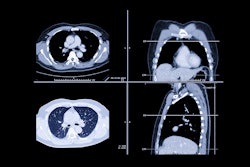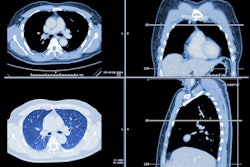Identifying patterns of interstitial lung disease (ILD) can be challenging due to the large variation of disease appearance, location, and configuration, according to co-author Ziyue Xu, PhD, of the U.S. National Institutes of Health (NIH) Clinical Center. This task is typically handled by expert radiologists and is very time-consuming; interstitial lung diseases can cover a large portion of the lung, with different patterns coexisting on a single CT slice.
"Therefore, a computer-aided detection system may help radiologists in promoting efficiency," Xu told AuntMinnie.com.
To address these challenges, the NIH team developed a convolutional neural network that is designed to simultaneously detect multiple patterns of interstitial lung disease from a CT slice. It also utilizes the entire CT slice as an input, obviating the need to manually draw a region of interest for the software to analyze.
The group's method yielded high accuracy in testing on the Lung Tissue Research Consortium dataset, Xu said.
Learn more about this NIH project by visiting their poster at Lakeside Center.



















